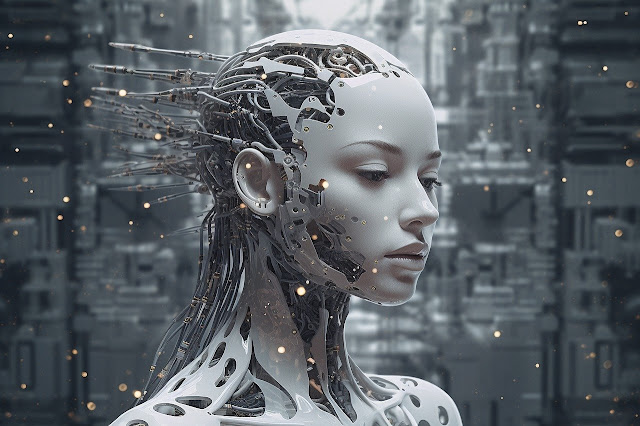Introduction
Artificial intelligence (AI) has significantly advanced technology in today’s quickly changing technological environment. ChatGPT, created by OpenAI, is a well-known AI model that demonstrates its capacity to produce responses that resemble those of humans. However, the query is if ChatGPT can actually match or even outperform human discussions in terms of complexity, context, and emotional intelligence. By examining the benefits and drawbacks of both ChatGPT and real-world discussions, this essay hopes to highlight the distinctive characteristics of each.
Understanding ChatGPT
What is ChatGPT?
An artificial intelligence language model called ChatGPT was created to have engaging, comprehensible talks with people. It takes advantage of the transformer architecture and makes extensive use of data to produce replies that mimic the language patterns and coherence of humans.
How does ChatGPT work?
Pre-training and fine-tuning are the two steps that ChatGPT goes through. The model is exposed to a variety of internet content during the pre-training phase, learning grammar rules, statistical information, and linguistic patterns. To improve the model’s conversational skills, it is trained on specific datasets with human feedback.
The Power of Human Conversations
The value of human interaction
Due to our capacity for empathy, nuanced understanding, and emotional expression, human talks have a special importance. These characteristics promote connections and the development of relationships that go beyond the simple exchange of information, enabling deep and meaningful interactions.
Emotional intelligence in conversations
Humans are exceptionally good at recognising and responding to emotions, and they can modify their communication depending on the emotional situation. We can provide empathy, assistance, and personalised reactions thanks to emotional intelligence, which fosters a sense of trust and understanding.
ChatGPT vs. Human: A Comparison
Accuracy and factual knowledge
A massive database of factual data is made available to ChatGPT throughout the pre-training phase. Human interactions, however, frequently rely on individual experiences, intuition, and judgement, allowing for individualised insights and a wider contextual awareness.
Contextual understanding
ChatGPT does a fair job at displaying contextual comprehension, but human interactions are much better at picking up on subtle subtleties, subtext, and cultural references. People are able to successfully traverse complex talks thanks to their plethora of real-world experiences.
Creativity and originality
Because of the variety of sources used in its training data, ChatGPT is able to produce original responses. Human interactions, on the other hand, encourage individual creativity, imaginative thinking, and the capacity to think beyond the box, leading to novel solutions and novel viewpoints.
Efficiency and scalability
By offering immediate responses and managing multiple discussions at once, ChatGPT demonstrates efficiency and scalability. Human talks, on the other hand, could need more time and focus, which limits their scalability but promotes deeper engagement and customised connections.
The Role of ChatGPT in Everyday Life
Applications of ChatGPT
ChatGPT is useful in a variety of fields, including customer service, virtual assistants, and language translation. It is an effective tool for automating repetitive processes and improving user experiences since it can produce logical responses.
Benefits and limitations of ChatGPT
ChatGPT has restrictions in addition to convenience and effectiveness. Human monitoring is necessary to ensure quality and reduce biases since it occasionally produces wrong or irrelevant results. Furthermore, ChatGPT lacks actual comprehension and consciousness, which restricts its capacity to take part in in-depth philosophical or ethical debates.
Enhancing Conversational Experiences
Augmenting human conversations with ChatGPT
We may take advantage of ChatGPT’s advantages in generating pertinent information, offering insights, or helping with challenging tasks by incorporating it into human discussions. By fusing the advantages of AI with the human touch, this symbiotic relationship improves the overall conversational experience.
Ethical considerations and challenges
Ethical questions emerge when AI gets increasingly interwoven into conversations. To avoid abuse or the potential for damaging information manipulation, privacy, data security, and responsible AI use should be given top priority. To properly address these difficulties, ongoing research and cooperation are required.
Conclusion
In the realm of conversations, both ChatGPT and human interactions bring valuable qualities to the table. While ChatGPT excels in factual knowledge, efficiency, and scalability, human conversations shine in emotional intelligence, contextual understanding, and creativity.
The strengths of ChatGPT lie in its ability to process vast amounts of information quickly and generate coherent responses. It can assist in automating routine tasks, providing instant answers, and enhancing user experiences in various applications such as customer support and virtual assistants. However, ChatGPT has limitations and may occasionally produce inaccurate or irrelevant responses, requiring human oversight to ensure quality.
Human talks, however, have a special significance because of our capacity for empathy, nuanced understanding, and emotional expression. We can provide empathy, assistance, and personalised reactions thanks to emotional intelligence, which fosters a sense of trust and understanding. Human talks thrive at understanding subtle contextual cues, subtext, and cultural references, drawing on personal experiences to steer conversations successfully.
The future rests on combining the advantages of ChatGPT with human conversations rather than pitting them against one another. We can combine the effectiveness and factual understanding of AI with the emotional intelligence and creativity of human dialogues by incorporating ChatGPT into human relationships. More enlightening, significant, and powerful talks may result from this symbiotic relationship.
But it’s important to think about the ethical issues and difficulties that come with integrating AI. To avoid potential abuse or harm, privacy, data security, and responsible AI usage should be prioritised. To properly address these issues and ensure the appropriate use of AI in dialogues, ongoing research and stakeholder participation are required.
In conclusion, neither ChatGPT nor actual talks are perfect in every way. The ultimate power resides in combining both, making use of AI while preserving the unique aspects of human interactions. By doing this, we can strike a harmonious balance that improves conversational encounters and encourages deeper ties in our increasingly technologically-driven society.

